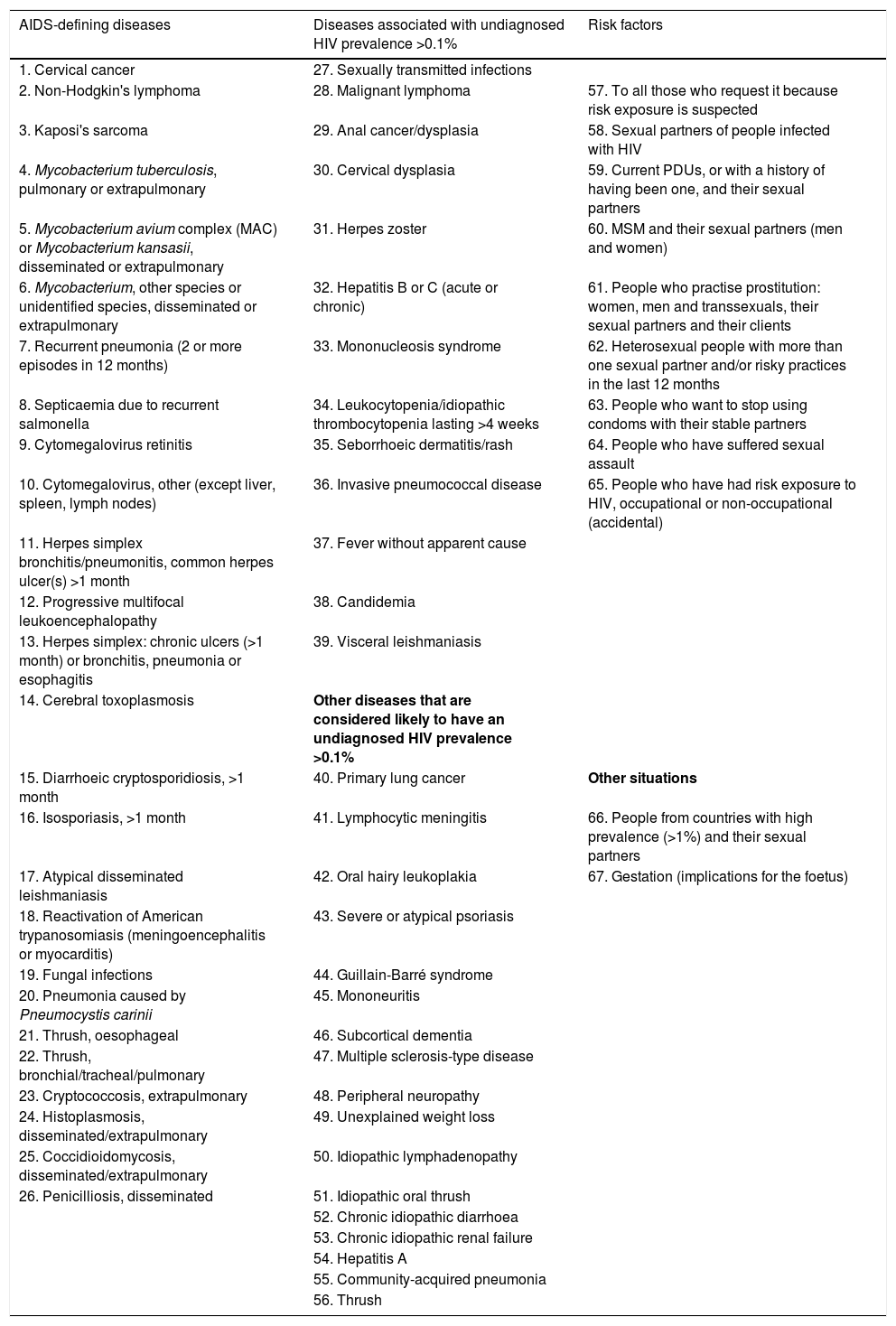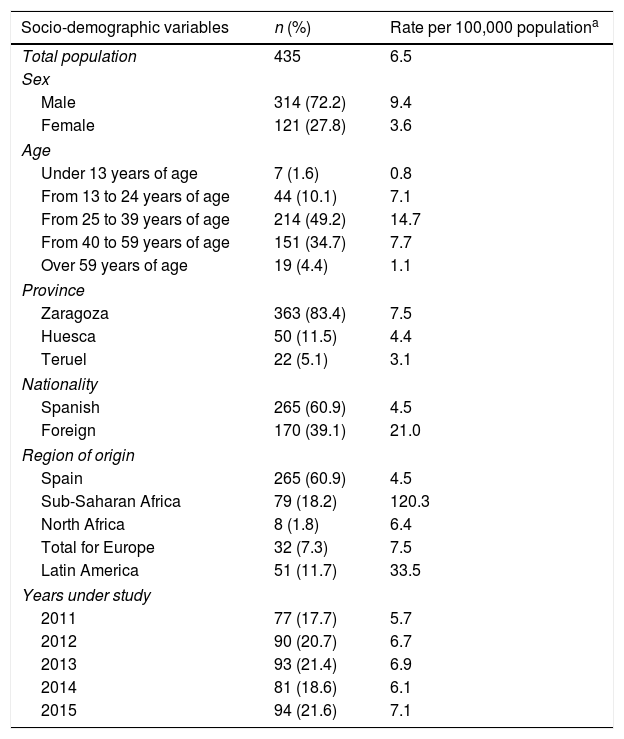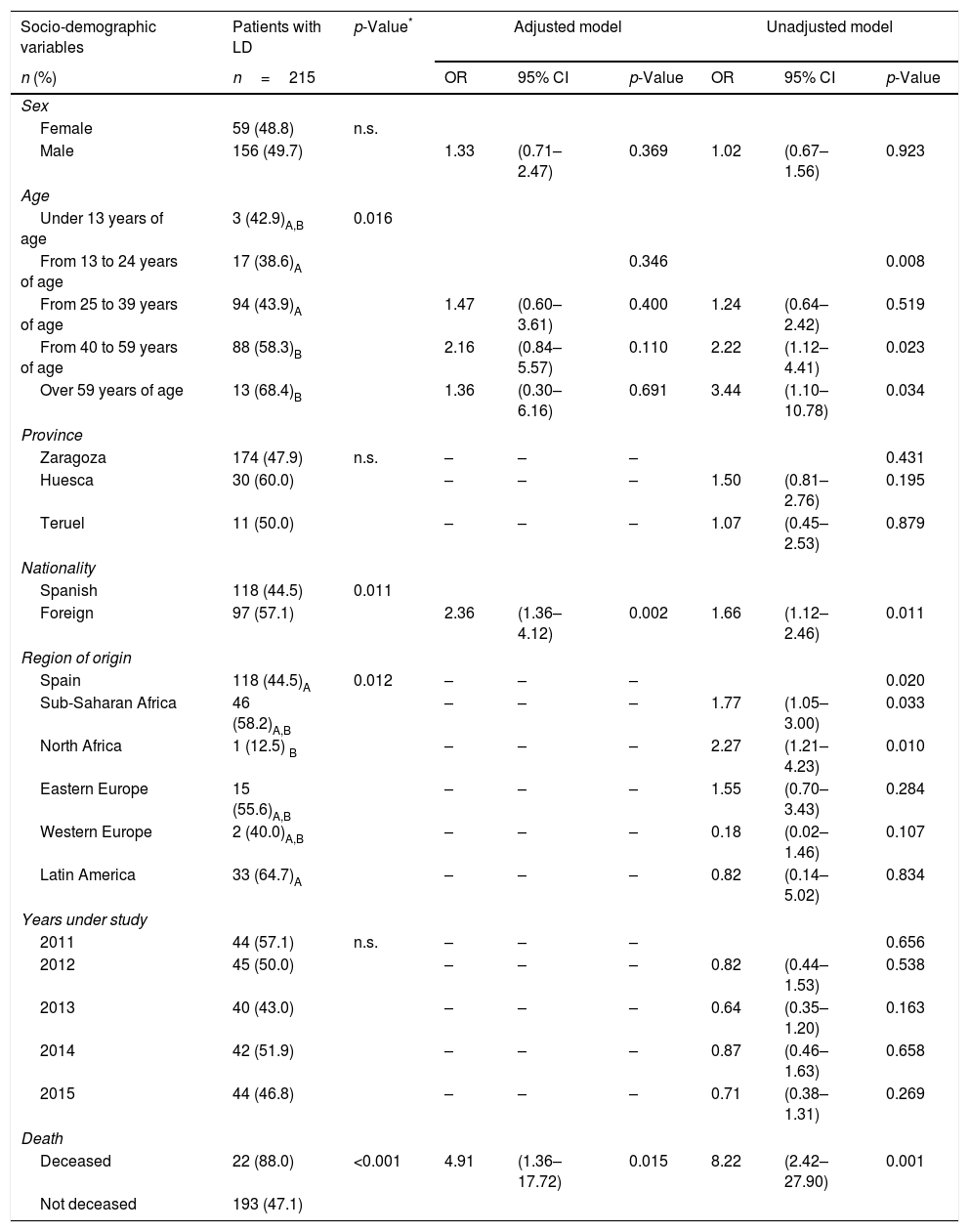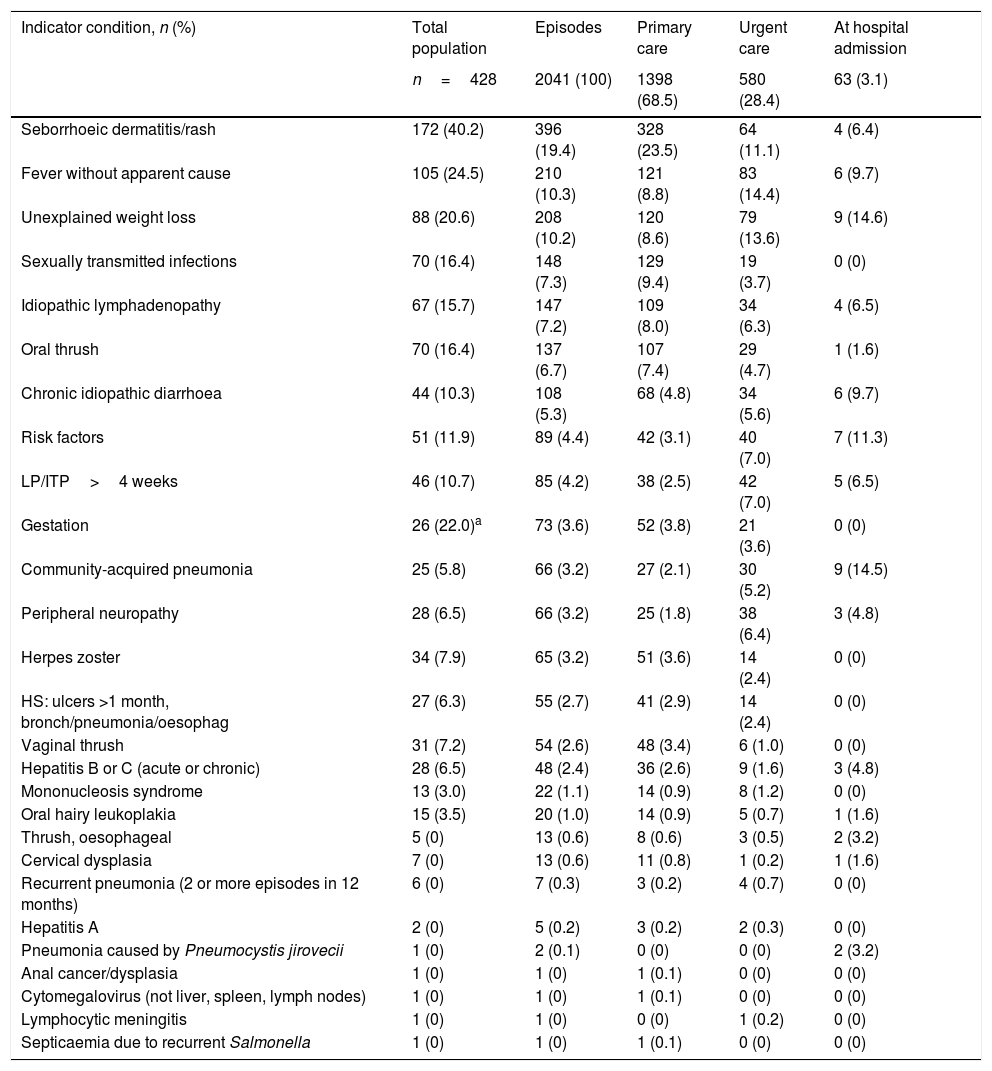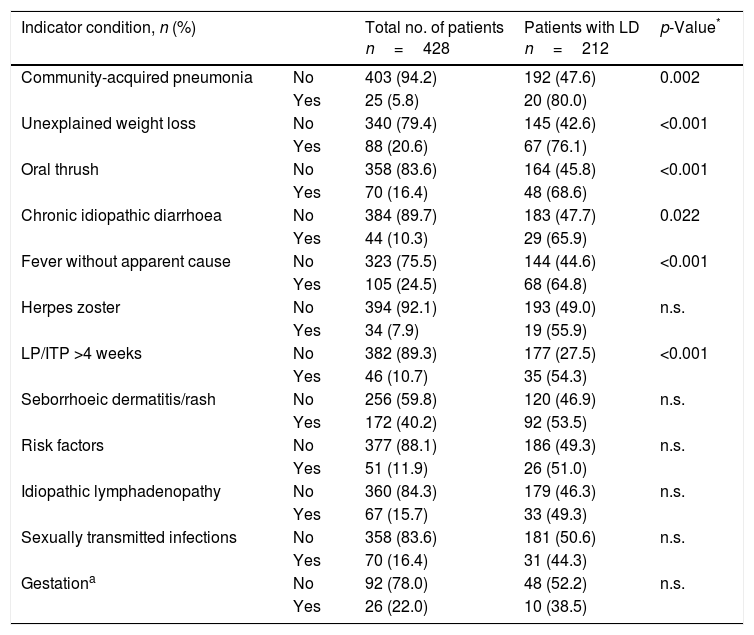Late diagnosis (LD) of human immunodeficiency virus (HIV) infection (CD4 lymphocytes <350/μl at diagnosis of the disease), deteriorates the condition of those affected and increases the probability of transmission. The objective of the present study was to analyse the prevalence of LD, to identify missed diagnostic opportunities (MDO) and to find out which level of the health care delivery system they took place.
MethodsRetrospective, observational and descriptive study of the population diagnosed with infection of HIV/AIDS in the period 2011–2015 in Aragon. MDO were identified during the 3 years prior to diagnosis of the disease in all levels of the health care delivery system as well as frequentation of consultations. The indicator conditions (IC) that generated more MDO were analysed according to the latest recommendations for early diagnosis of HIV in the health care setting.
Results435 newly diagnosed HIV/AIDS cases were analysed. 45.1% were diagnosed in Primary Healthcare (PH). 49.4% presented criteria of LD and 61.1% were infected through heterosexual contact. The majority of MDO (68.5%) were given in PH. The IC that generated the most MDO were seborrheic dermatitis/exanthema (19.4%) and fever of unknown origin (10.3%). However, the IC that were associated with higher LD were pneumonia acquired in the community and unjustified weight loss.
ConclusionIn Aragon, prevalence of LD is high, the main route of infection is heterosexual and most of MDO go unnoticed in PH. The dissemination of current guidelines for requesting IC guided HIV testing and HIV screening across the preoperative period will result in an effective measure to decrease the LD.
El diagnóstico tardío (DT) de la infección por el virus de la inmunodeficiencia humana (VIH) (linfocitos CD4<350/μl al diagnóstico de la enfermedad) empeora el pronóstico de los afectados y aumenta las probabilidades de transmisión. El objetivo del presente trabajo fue analizar la prevalencia de DT, identificar las oportunidades diagnósticas perdidas (ODP) y averiguar el nivel asistencial donde se produjeron.
MétodosEstudio retrospectivo, observacional, descriptivo de la población diagnosticada de infección por VIH/sida en el periodo 2011-2015 en Aragón. Se identificaron las ODP durante los 3 años previos al diagnóstico de la enfermedad en todos los niveles asistenciales, así como la frecuentación asistencial. Se analizaron las condiciones indicadoras (CI) que generaron más ODP, según las últimas recomendaciones para el diagnóstico precoz del VIH en el medio sanitario.
ResultadosSe analizaron 435 nuevos casos de VIH/sida. El 45,1% fueron diagnosticados en Atención Primaria (AP). El 49,4% presentaron criterios de DT y el 61,1% se contagiaron vía heterosexual. La mayor parte de ODP (68,5%) se dieron en AP. Las CI que generaron más ODP fueron la dermatitis seborreica/exantema (19,4%) y la fiebre sin causa aparente (10,3%). Sin embargo, las CI que se asociaron a mayor DT fueron la neumonía adquirida en la comunidad y la pérdida de peso injustificada.
ConclusiónEn Aragón, la prevalencia de DT es elevada, la principal vía de transmisión es la heterosexual y la mayor parte de las CI pasan desapercibidas en AP. La difusión de las guías actuales para solicitar una prueba de VIH orientada por CI y el screening VIH en todo preoperatorio es una medida eficaz para disminuir el DT.
Article
Socio de la Sociedad Española de Enfermedades Infecciosas y Microbiología Clínica

Para acceder a la revista
Es necesario que lo haga desde la zona privada de la web de la SEIMC, clique aquí
Para realizar los cursos formativos
La actividad estará abierta para socios de la SEIMC. IMPORTANTE, recuerde que requiere registro previo gratuito. Empezar aquí






